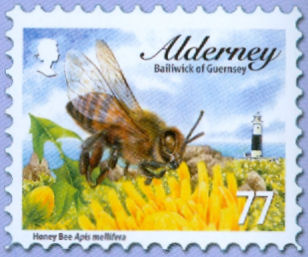Sudden losses of bees have been observed in spring during maize sowing. The death of bees has been correlated with the use of neonicotinoid-coated seed and the toxic particulates emitted by pneumatic drilling machines. The contamination of foragers in flight over the ploughed fields has been hypothesized. The airborne contamination has been proven, both with bees inside fixed cages around the field and in free flight near the driller. A new trial involving mobile cages has been established and consists of making rapid passes with single bees inside cages fixed to an aluminium bar. The bar was moved by two operators at different distances from the working drilling machine. A single pass was shown as sufficient to kill all the bees exposed to exhaust air on the emission side of the drill, when bees were subsequently held in high relative humidity. The extent of toxic cloud around driller was evaluated at the height of 0.5, 1.8 and 3.5 m and proved to be about 20 m in diameter, with an ellipsoidal shape. The shape may be influenced by working speed of the drill and environmental parameters, and is easily shown by adding talc powder to the seed in the machine hopper. A new driller equipment was evaluated consisting of two tubes inclined towards the soil that direct the exhaust air towards the ground. The survival rate of the bees was not substantially increased using the modified drill and was lower than 50%. Chemical analyses show up to 4000 ng of insecticide in single bees with an average content around 300 ng. Similar quantities were observed at increased distances from the modified or unmodified drillers. This new evaluation of bee mortality in the field is an innovative biological test to verify the hypothetical efficiency (or not) of driller modifications.
Source:
V. Girolami 1, M. Marzaro 1, L. Vivan 1, L. Mazzon 1, C. Giorio 2, D. Marton 2 & A. Tapparo 2
Aerial powdering of bees inside mobile cages and the extent of neonicotinoid cloud surrounding corn drillers. J. Appl. Entomol, April 2012. doi: 10.1111/j.1439-0418.2012.01718.x
1 Dipartimento di Agronomia Animali Alimenti Risorse Naturali e Ambiente - Entomologia, Universita` di Padova, Legnaro, Padova, Italy
2 Dipartimento di Scienze Chimiche, Universita´ di Padova, Padova, Italy
Vincenzo Girolami (corresponding author),
Dipartimento di Agronomia Ambientale e Produzioni Vegetali, Entomologia, Universita´ di Padova, Viale dell’Universita´ 16, 35020 Legnaro, Padova, Italy. E-mail: vincenzo.girolami@unipd.it

- Log in to post comments
